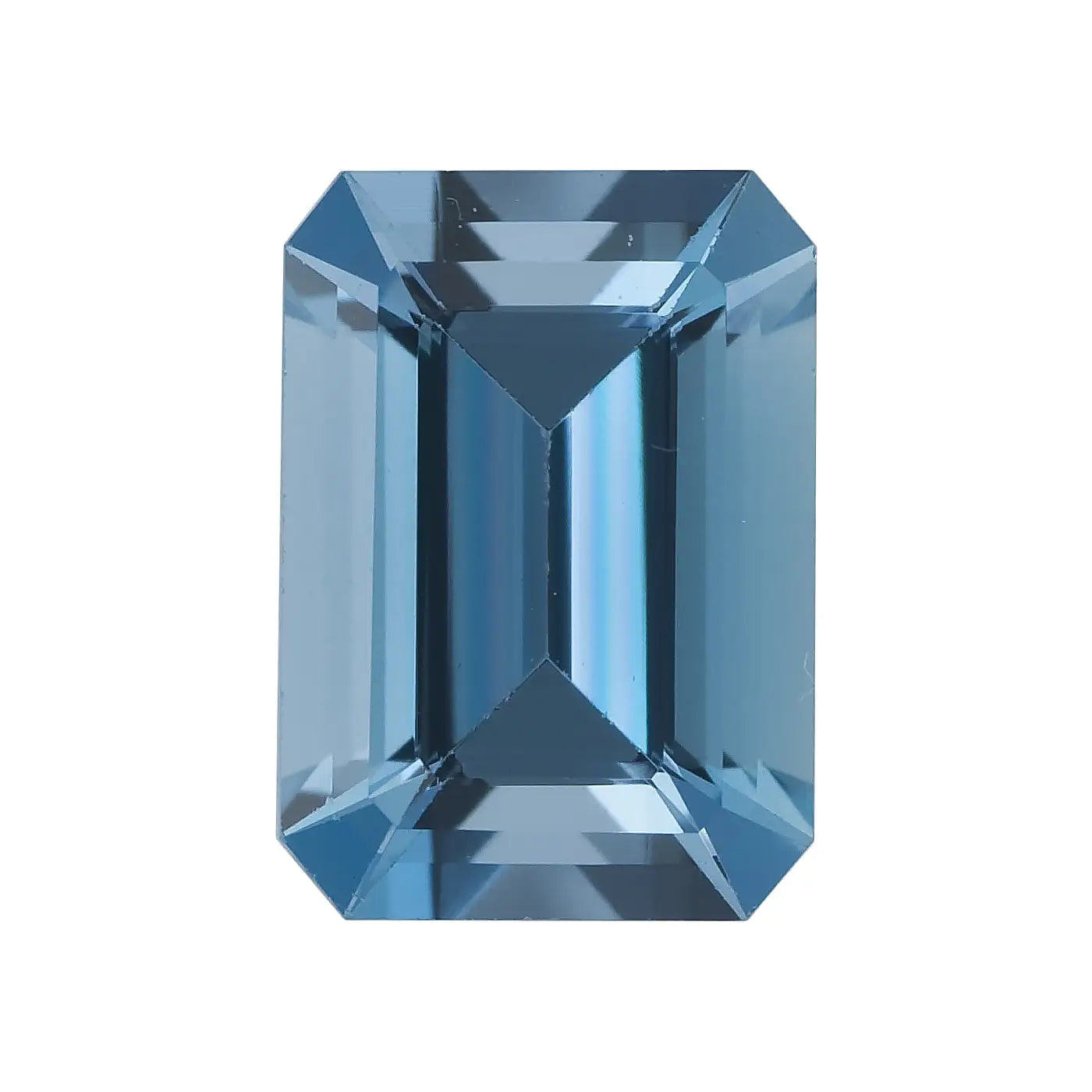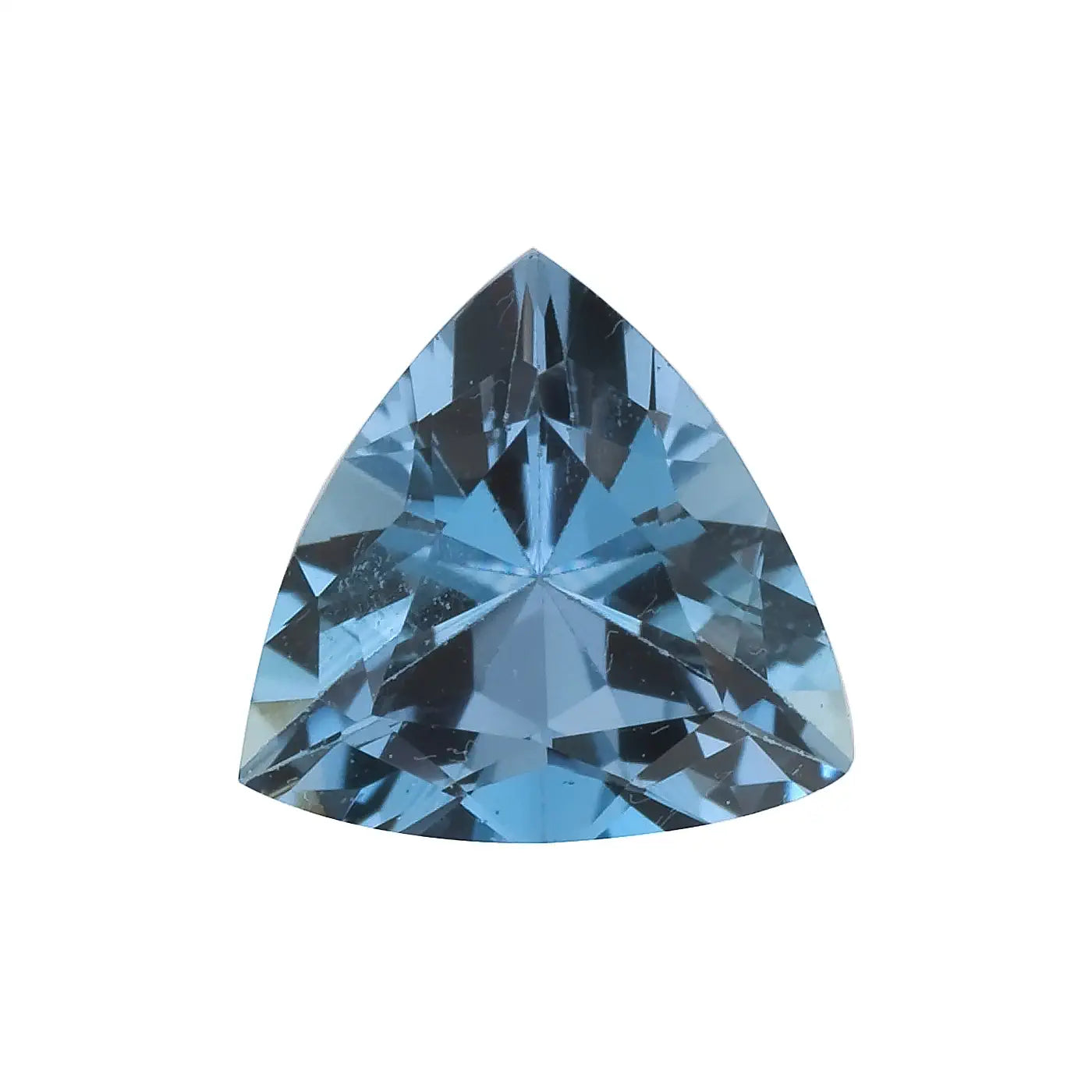ENCYCLOPEDIA
Aquamarine Full Guide

Aquamarine, from the Latin aqua marina meaning “sea water,” is a pale blue to greenish-blue gemstone from the beryl family — the same group as emerald and morganite. Its serene color and exceptional clarity have made it a symbol of calm, youth, and lasting harmony. Historically believed to protect travelers and soothe emotions, aquamarine is the birthstone for March and is traditionally gifted for a 19th wedding anniversary
Characteristics of the Aquamarine
Etymology: From the Latin aqua marina, meaning "water of the sea".
Family: Beryl
Chemical Composition: Aluminum silicate with beryllium
Hardness: 7.5 to 8 on the Mohs scale
Density: 2.68 – 2.74
Optical Properties: Uniaxial birefringent
Refractive Index: 1.577 – 1.583
Birefringence: 0.004 – 0.008
Crystal System: Hexagonal

The origin of Aquamarines
Aquamarines deposits are numerous and have yet to run out of out of jewelry-grade raw material.
The most important deposits can be found in the following countries :
- Brazil
- Madagascar
- Nigeria
- Mozambique
High-quality deposits have recently been discovered in Pakistan and Afghanistan.
Carat
The carat is the standard unit of measurement for the weight of gemstones. One carat is equal to 200 milligrams (0.2 gram).
This should not be mistaken with karat, which is the indicator of purity for gold.
With their lower density, aquamarines will appear larger than other gemstones of similar cuts and weights, making them popular for larger pieces.
The color of the Aquamarine
The aquamarine's color ranges from light pastel blue to deeper blue. The intensity of the color will directly correlate with the presence of iron. Some aquamarines can also display greenish-blue hues.
The most sought-after aquamarines are the ones with deeper shades of blue, found in exceptional Brazilian aquamarines from the Minas Gerais region, in the Santa Maria de Itabira mine. The mine is nearly exhausted, making the extracted aquamarines very expensive.
Discover our Guide on the Colors of Gemstones.






The clarity of Aquamarines
Most aquamarines are free of inclusions visible to the naked eye, we call them "eye-clean". However with a loup or microscope, some inclusions can be detected, often in the shape of tubes, empty or filled with liquid.
This lack of inclusion allows the light to interact freely with the facets of the stone, making aquamarines a brilliant gemstone.
Cut & Shapes
The aquamarine, thanks to its lack of major inclusions can easily be cut into different shapes, depending on the rough material or the market demand. The most popular shapes however are the emerald cut, the round cut, oval and pear.
The emerald cut requires a deep enough color, as its step cuts increase the transparency of the stone. The higher count of facets on round, oval and pear aquamarine provide more sparkle and brilliance.

Round Shape Aquamarine

Oval Shape Aquamarine

Princess Shape Aquamarine

Emerald Cut Aquamarine

Pear Shape Aquamarine

Trillion Cut Aquamarine
Birthstone & Wedding Anniversary
The aquamarine is the birthstone for March.
It is also used to celebrate the 19th wedding anniversary in the United States.
Discover our Birthstone Full Guide.

Treatment
Most mined aquamarines contain green hues, which is sometimes even the main color. A controlled heat treatment will convert the ferric iron, which creates the green hue, to a ferrous iron to make the stone bluer.
Some stones, usually those lacking in color, may be irradiated, but the enhancement fades with time as it is exposed to light.
Unheated untreated aquamarines are extremely rare, thus making them highly valuable. You should always ask for a certificate from an independent laboratory to prove the stone has not been treated.








